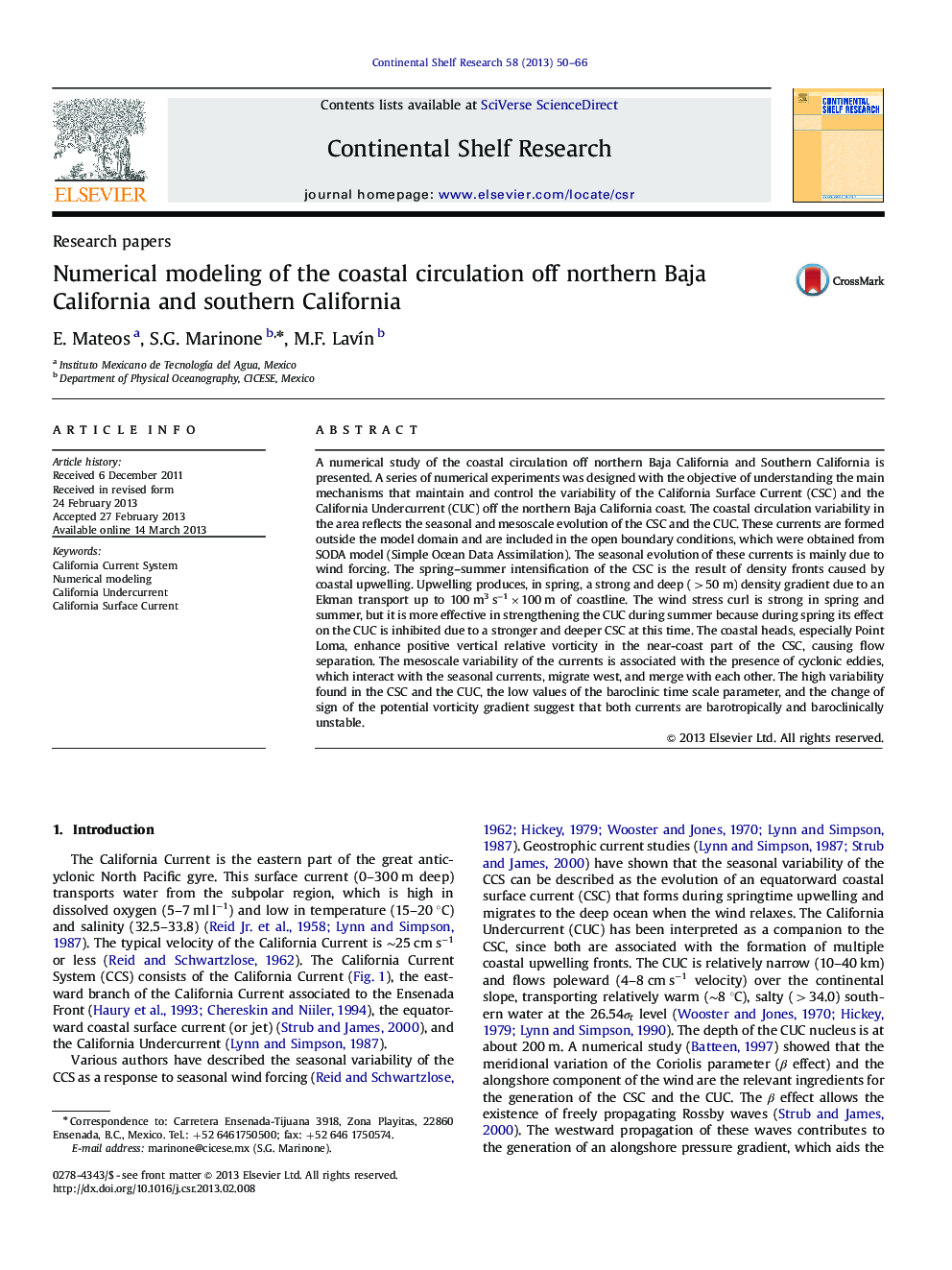| کد مقاله | کد نشریه | سال انتشار | مقاله انگلیسی | نسخه تمام متن |
|---|---|---|---|---|
| 4532227 | 1626153 | 2013 | 17 صفحه PDF | دانلود رایگان |

► The seasonal evolution of the Coastal Surface Current and Undercurrent is due to wind forcing.
► The Coastal Surface Current intensification is the result of density fronts caused by upwelling.
► The wind stress curl strengthens the Coastal Undercurrent during summer.
► Cyclonic eddies and currents interact producing mesoscale variability of the currents.
A numerical study of the coastal circulation off northern Baja California and Southern California is presented. A series of numerical experiments was designed with the objective of understanding the main mechanisms that maintain and control the variability of the California Surface Current (CSC) and the California Undercurrent (CUC) off the northern Baja California coast. The coastal circulation variability in the area reflects the seasonal and mesoscale evolution of the CSC and the CUC. These currents are formed outside the model domain and are included in the open boundary conditions, which were obtained from SODA model (Simple Ocean Data Assimilation). The seasonal evolution of these currents is mainly due to wind forcing. The spring–summer intensification of the CSC is the result of density fronts caused by coastal upwelling. Upwelling produces, in spring, a strong and deep (>50 m) density gradient due to an Ekman transport up to 100 m3 s−1×100 m of coastline. The wind stress curl is strong in spring and summer, but it is more effective in strengthening the CUC during summer because during spring its effect on the CUC is inhibited due to a stronger and deeper CSC at this time. The coastal heads, especially Point Loma, enhance positive vertical relative vorticity in the near-coast part of the CSC, causing flow separation. The mesoscale variability of the currents is associated with the presence of cyclonic eddies, which interact with the seasonal currents, migrate west, and merge with each other. The high variability found in the CSC and the CUC, the low values of the baroclinic time scale parameter, and the change of sign of the potential vorticity gradient suggest that both currents are barotropically and baroclinically unstable.
Journal: Continental Shelf Research - Volume 58, 15 April 2013, Pages 50–66